LaTeX templates and examples — Conference Paper
Recent
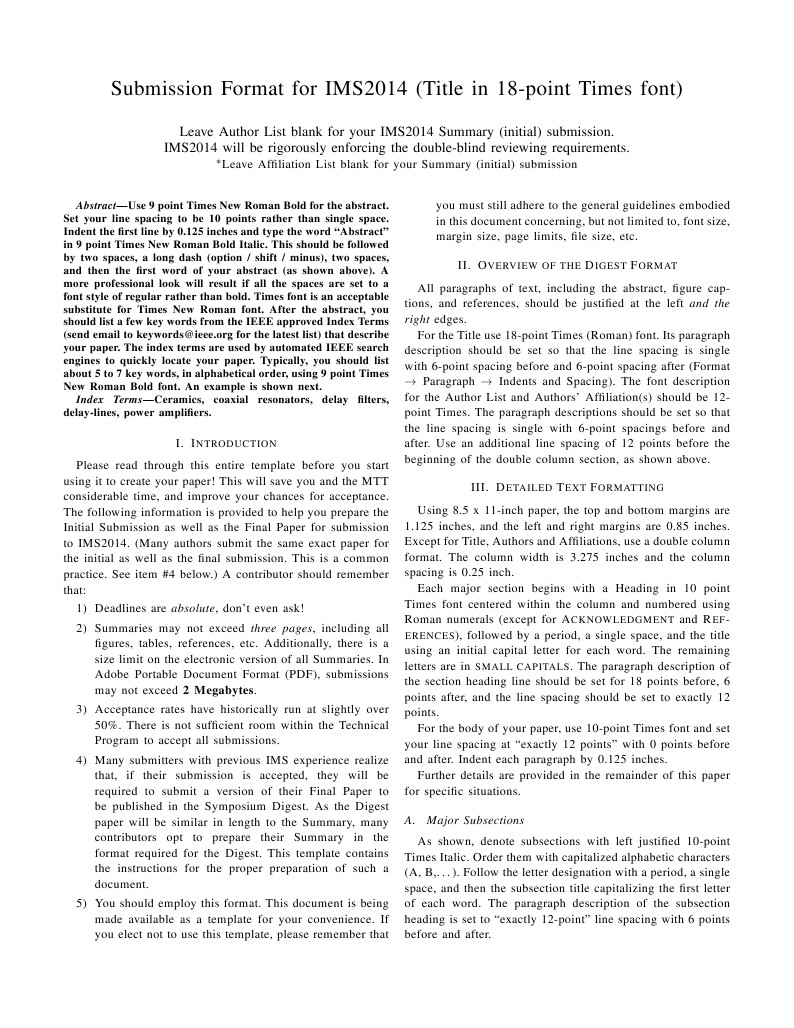
Submission format for the International Microwave Symposium (MTT IMS 2014). Authors are invited to submit technical papers describing original work on radio-frequency, microwave, millimeter-wave, and terahertz (THz) theory and techniques. The deadline for submission is 9 December 2013.
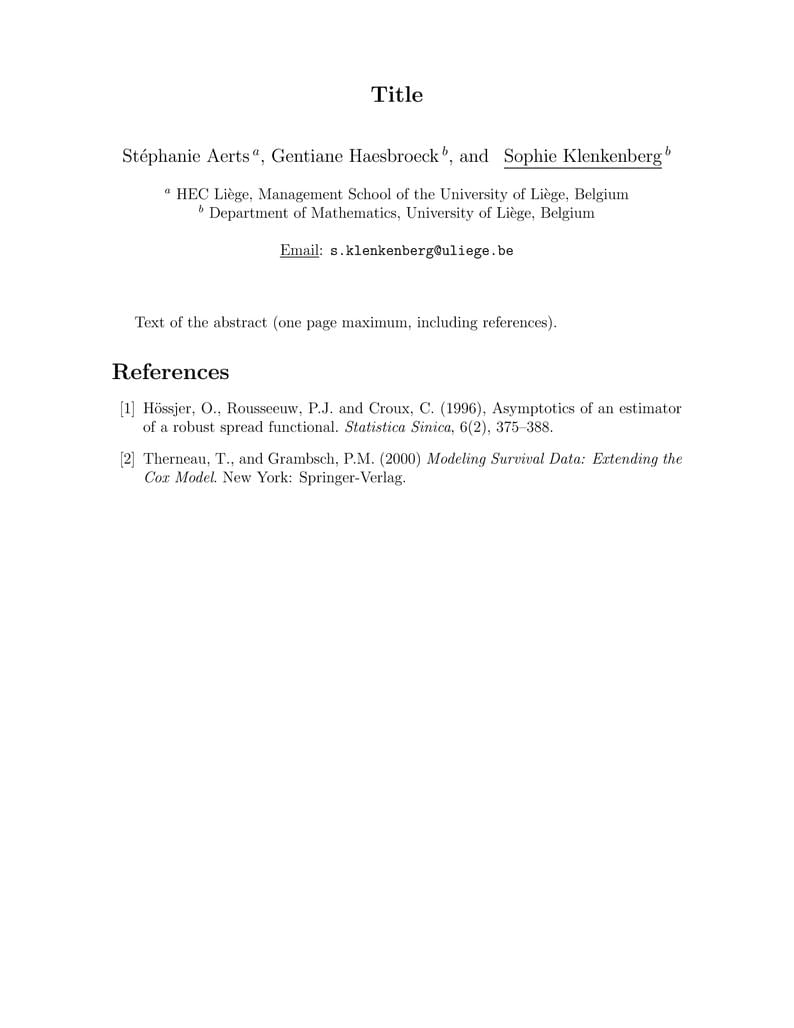
Official template for the submission of an abstract for a talk or a poster to the 28th Annual Meeting of the RSSB.
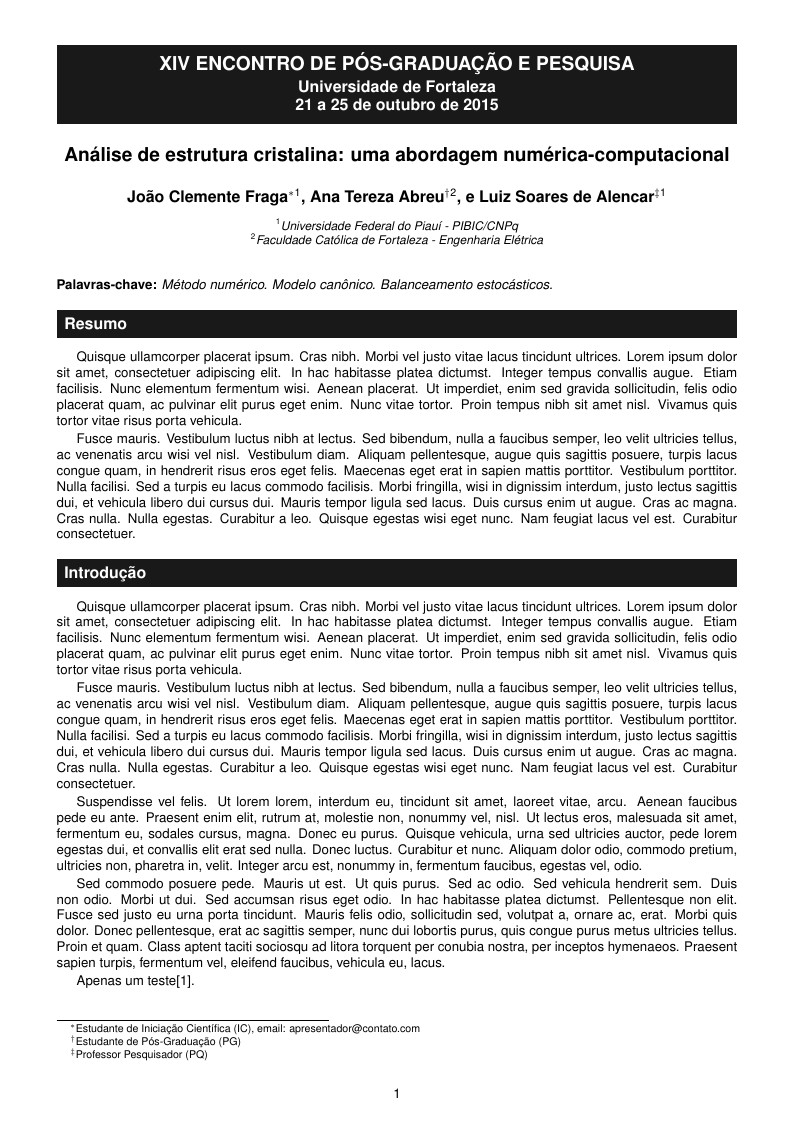
Modelo de artigo para submissão nos encontros científicos da Universidade de Fortaleza (UNIFOR).
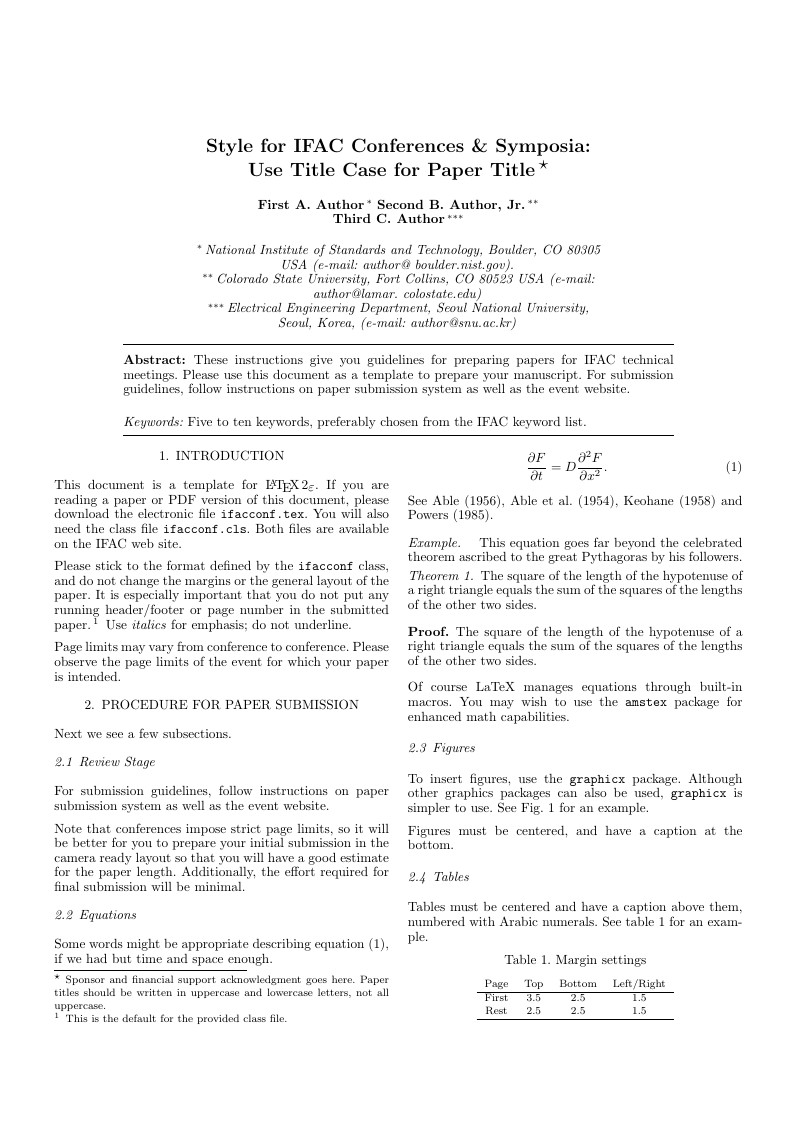
These instructions give you guidelines for preparing papers for IFAC technical meetings. Please use this document as a template to prepare your manuscript. For submission guidelines, follow instructions on paper submission system as well as the event website.
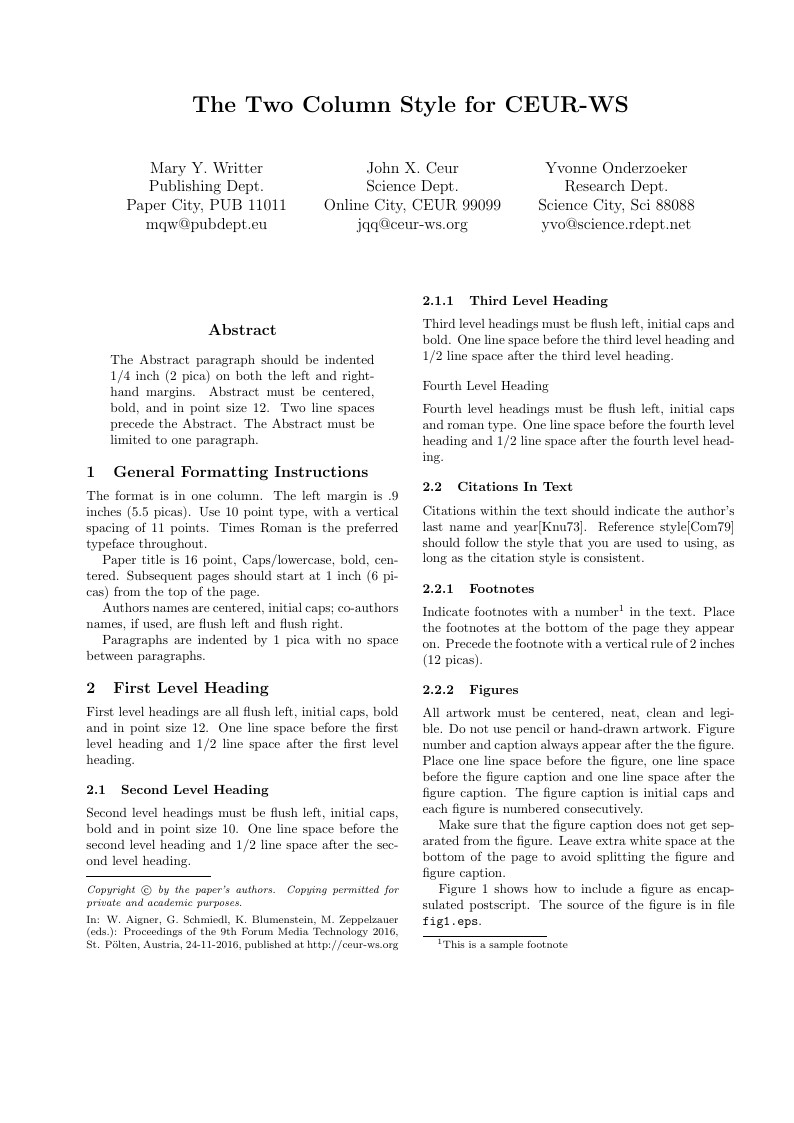
Template for the 9th Forum Media Technology at St. Poelten University of Applied Sciences. Adapted from "The Two Column Style for CEUR-WS".
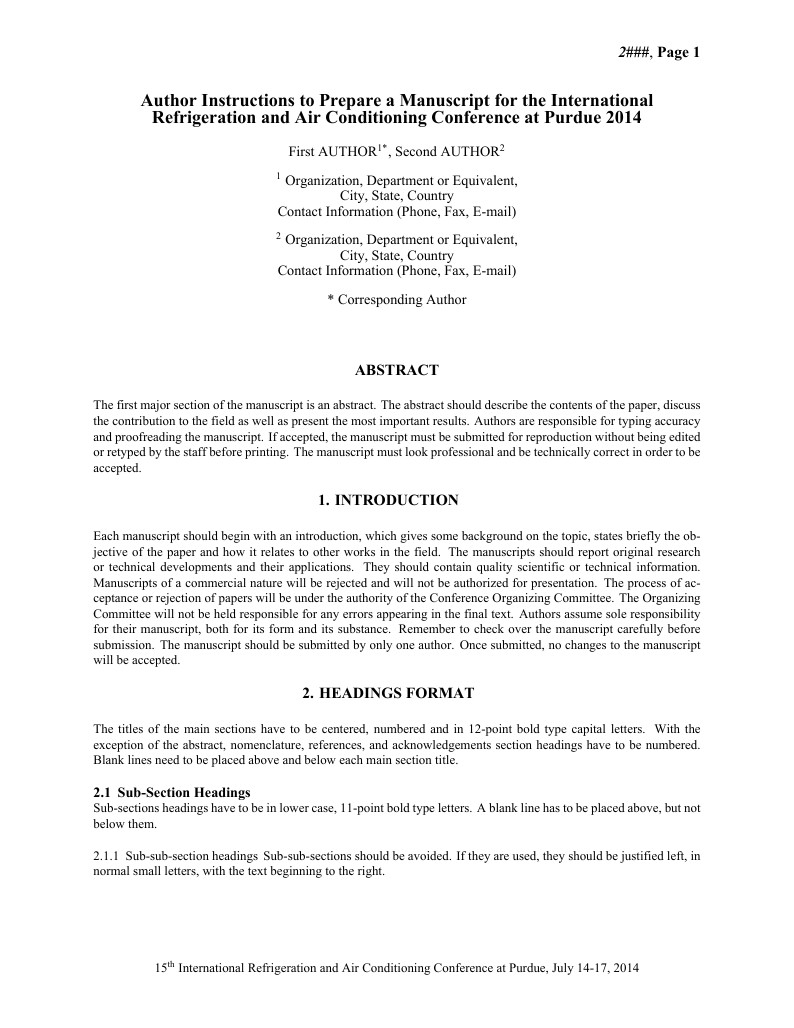
This is a template for the International Refrigeration and Air Conditioning Conference at Purdue, downloaded from the Purdue Conferences website.
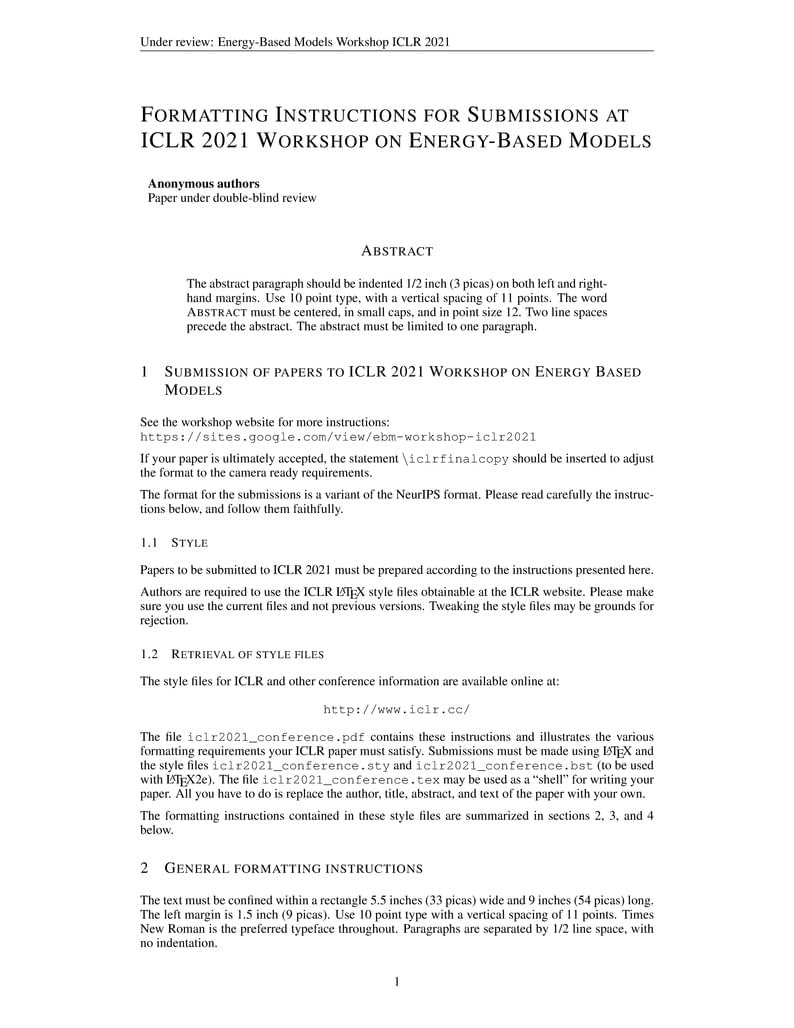
Template for Energy-Based Models Workshop at the 2021 International Conference on Learning Representations ICLR2021.
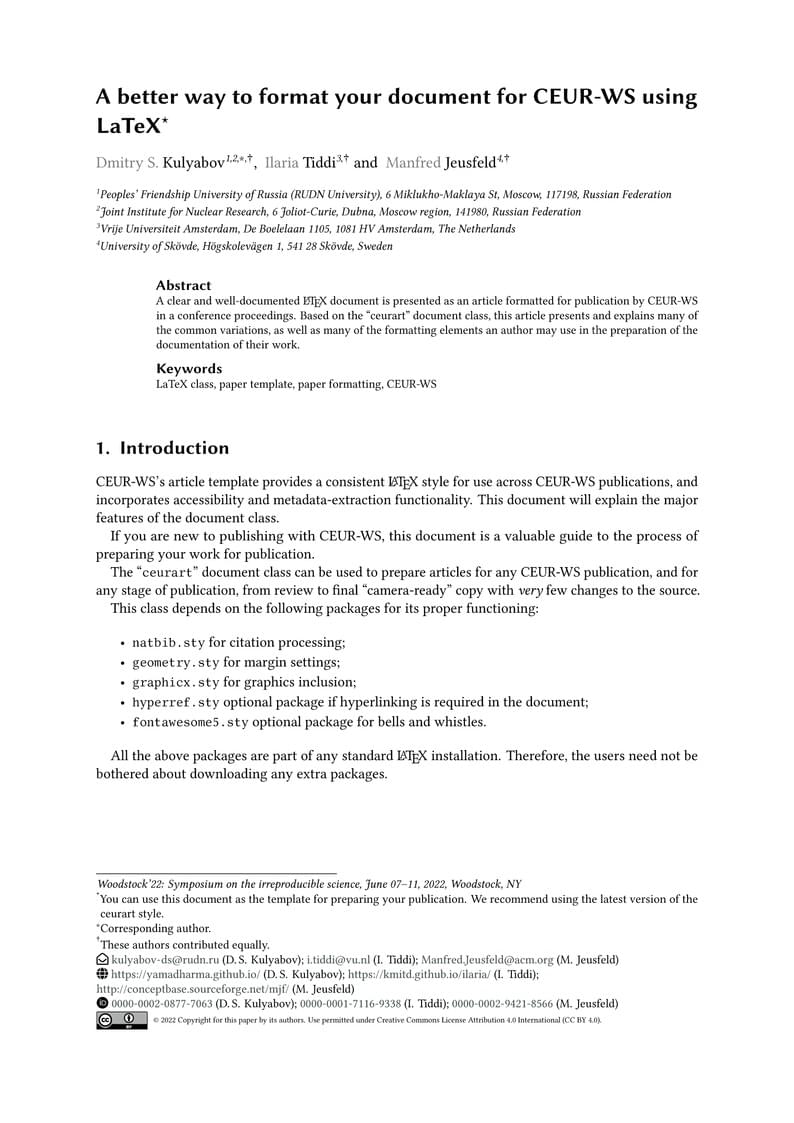
Template CEURART V 0.62 (2025-10-06) for CEUR-WS.org
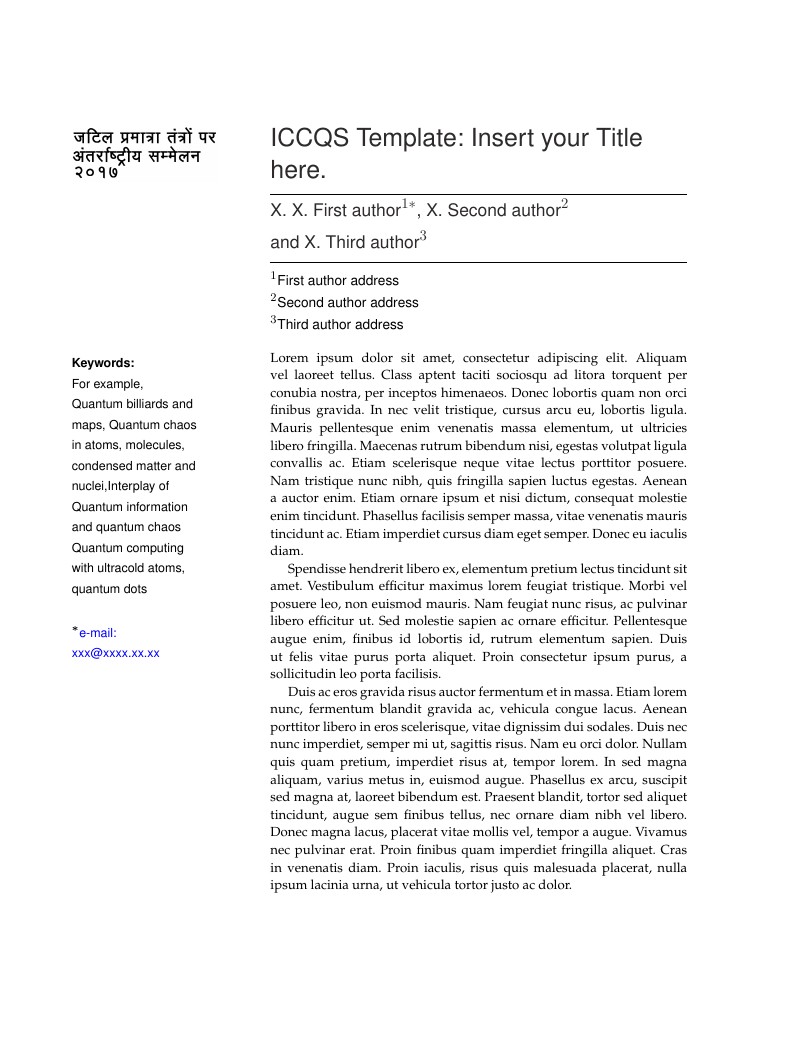
ICCQS Submission Template. version: 13th January 2017 Kindly keep your contribution to maximum of 2 pages of the given format. Kindly send us back the final .pdf file with your name as the file name. Unconditional free and open to use for others as well.
\begin
Discover why over 20 million people worldwide trust Overleaf with their work.